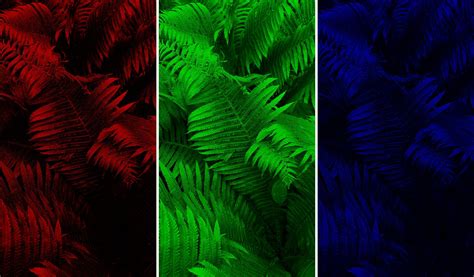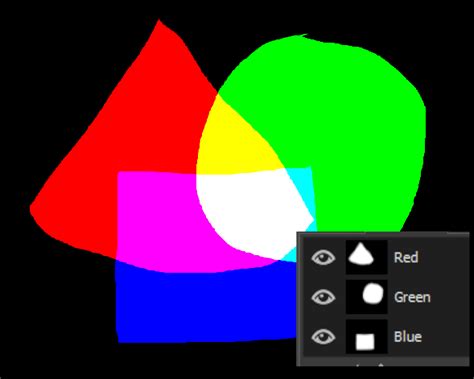rgb why if use only one chanel | blue and red channel image rgb why if use only one chanel Another method: use the Channel control and turn off the R or G or B channels (1,2,3) and look at what's left: I'll occasionally use deflicker only on one color channel, or I use SNR only on one channel (particularly the Blue . Leo Vince LV One Stainless Steel | 2 Slip-On Exhaust For Yamaha FZ6/Fazer '04-06.
0 · rgb image extractor channels
1 · rgb image extract red channel
2 · how to understand channels in image
3 · how to read channels in image
4 · how to extract channels from rgb
5 · diamant returning single rgb channel
6 · blue and red channel image
7 · blackmagic single rgb image channel
Pennzoil Platinum LV Multi-Vehicle ATF. Premium performance, synthetic technology fluid designed to meet the needs of multiple vehicle types for service fill in automatic transmission service.
The safest way is the Channel Mixer, which retains the file as monochrome RGB in the original color space. It will duplicate one channel into the other two. Or simply copy the red channel and paste into the other two. There are a handful of colour spaces to represent an image such as RGB, BGR, HSV, CMYK etc. But there is something they all have in common. They are the channels, which these colour spaces use,. I found the opencv documentation to extract the single channels from an RGB image using the cv2.split (img) command, but it does not really return an image of the chosen channel. They all look like grayscale. Another method: use the Channel control and turn off the R or G or B channels (1,2,3) and look at what's left: I'll occasionally use deflicker only on one color channel, or I use SNR only on one channel (particularly the Blue .
I am trying to make a RGB mask for game development purposes using GIMP. I am trying to add a gray scale mask to the red channel and then a different gray scale mask to . The work-around for this currently is that selecting everything with the markee, rather that saying 'select all', works. 2. if I have only one channel selected, and then click .
Just like with a single channel image, we can create an RGB image that allows us to visualize our multichannel image – using the LUTs to figure out which RGB values are needed to represent . In the channels bit at the top you can swap channels around, if you set them all to the same channel you get that channel only as greyscale. On any map in the Output section .

gucci horsebit card case wallet
There is no need to convert your images to RGB, surely there should be a way provided by the library you are using to use only 1 channel input. Or if you are writing your . Make a new RGB file of the same size as your original grayscale source images. Open your channels panel, turn on only the desired channel and paste the corresponding . The safest way is the Channel Mixer, which retains the file as monochrome RGB in the original color space. It will duplicate one channel into the other two. Or simply copy the red channel and paste into the other two. There are a handful of colour spaces to represent an image such as RGB, BGR, HSV, CMYK etc. But there is something they all have in common. They are the channels, which these colour spaces use,.
I found the opencv documentation to extract the single channels from an RGB image using the cv2.split (img) command, but it does not really return an image of the chosen channel. They all look like grayscale. Another method: use the Channel control and turn off the R or G or B channels (1,2,3) and look at what's left: I'll occasionally use deflicker only on one color channel, or I use SNR only on one channel (particularly the Blue channel with old film). That seems to . The main idea is to use inRange() function (available for Python OpenCV) to obtain the mask for the image that specifies the pixels, which value is between 129 and 255 (inclusive). See the second answer for more details. Hello! I've compared 3 methods of making separate layers from RGB channels. 1st: go to the Channels panel, click the channel, Ctrl+A, Ctrl+C and Ctrl+V in the Layers panel. 2nd: via the "Image - Apply image" command.
I am trying to split the RGB .jpg image into three channels: imread = cv2.imread("picture.jpg") blue = imread[:, :, 0] green = imread[:, :, 1] red = imread[:, :, 2] cv2.imshow("preview", blue) cv2.waitKey(0) but the code will display grayscale image.
I am trying to make a RGB mask for game development purposes using GIMP. I am trying to add a gray scale mask to the red channel and then a different gray scale mask to the green channel. So that the game engine can read different values from different channels.
The work-around for this currently is that selecting everything with the markee, rather that saying 'select all', works. 2. if I have only one channel selected, and then click 'copy', for some reason the entire layer (ie all three channels RGB) gets copied into the clipboard.Just like with a single channel image, we can create an RGB image that allows us to visualize our multichannel image – using the LUTs to figure out which RGB values are needed to represent the color of each pixel. The safest way is the Channel Mixer, which retains the file as monochrome RGB in the original color space. It will duplicate one channel into the other two. Or simply copy the red channel and paste into the other two. There are a handful of colour spaces to represent an image such as RGB, BGR, HSV, CMYK etc. But there is something they all have in common. They are the channels, which these colour spaces use,.
I found the opencv documentation to extract the single channels from an RGB image using the cv2.split (img) command, but it does not really return an image of the chosen channel. They all look like grayscale.
Another method: use the Channel control and turn off the R or G or B channels (1,2,3) and look at what's left: I'll occasionally use deflicker only on one color channel, or I use SNR only on one channel (particularly the Blue channel with old film). That seems to . The main idea is to use inRange() function (available for Python OpenCV) to obtain the mask for the image that specifies the pixels, which value is between 129 and 255 (inclusive). See the second answer for more details. Hello! I've compared 3 methods of making separate layers from RGB channels. 1st: go to the Channels panel, click the channel, Ctrl+A, Ctrl+C and Ctrl+V in the Layers panel. 2nd: via the "Image - Apply image" command.
I am trying to split the RGB .jpg image into three channels: imread = cv2.imread("picture.jpg") blue = imread[:, :, 0] green = imread[:, :, 1] red = imread[:, :, 2] cv2.imshow("preview", blue) cv2.waitKey(0) but the code will display grayscale image.
I am trying to make a RGB mask for game development purposes using GIMP. I am trying to add a gray scale mask to the red channel and then a different gray scale mask to the green channel. So that the game engine can read different values from different channels. The work-around for this currently is that selecting everything with the markee, rather that saying 'select all', works. 2. if I have only one channel selected, and then click 'copy', for some reason the entire layer (ie all three channels RGB) gets copied into the clipboard.
rgb image extractor channels

Elegant and versatile, the LV Trésor bucket hat is crafted in fine rabbit felt for an ultra-plush feel. A grosgrain band and an LV Iconic emblem in bejeweled gold-tone metal and pearls add an aura of sophistication, enhanced by a grosgrain ribbon on the inside bearing the House’s signature.
rgb why if use only one chanel|blue and red channel image



























